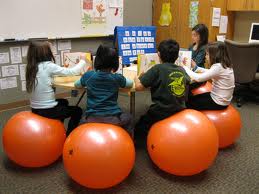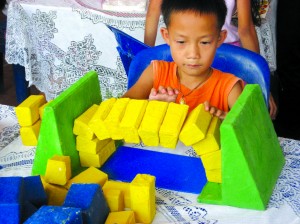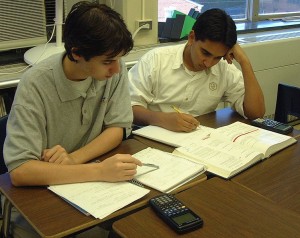New, more open-minded approaches to education are gaining momentum across the globe. Southern England’s Summerhill School, for example, takes a more student-centered approach, involving the pupils in decisions and other teaching activities.
Category: General
School Furniture Case Study
School furniture can have a tremendous impact on a classroom. It influences the students and their moods, the teachers and other staff, as well as the general atmosphere in the room. It must be functional and aesthetically pleasing, providing children with a structure they can feel comfortable and confident in.
Hertz Furniture recently launched a case study after a project in Texas:
More About Active Learning
Classroom Chairs and Alternative Teaching Methods
 It can be challenging to keep a large classroom focused and engaged during class, and teachers today often turn to alternative teaching methods to meet the needs of their individual students. Some school curricula aren’t so flexible, however, and teachers are forced to come up with creative ways to keep the children motivated.
It can be challenging to keep a large classroom focused and engaged during class, and teachers today often turn to alternative teaching methods to meet the needs of their individual students. Some school curricula aren’t so flexible, however, and teachers are forced to come up with creative ways to keep the children motivated.
Traditional classroom settings are often monotonous and boring, especially for young, energetic minds. Teachers often incorporate colorful decorations, bulletin boards and diagrams to keep students interested as well as to boost their creativity and enthusiasm. Some teachers even turn to less traditional furniture with the same goal. Standard school chairs provide children with a set structure, which can be important, but preschool and elementary teachers recognize the importance of creating a dynamic learning environment. Exercise balls are a great way to keep children focused during class, as they demand attention and good posture. Mats laid out in a circle also create a different atmosphere, making children feel more relaxed and open in their environment.
What alternative teaching methods have you tried?
Alternative Teaching Methods for Innovation
3 alternative teaching methods that can mold children into entrepreneurs, from @brunamartinuzzi: http://t.co/k9kD3JPteJ
— OPEN Forum (@OPENForum) November 21, 2013
Alternative Teaching Methods
 In today’s school system, many teachers utilize alternative teaching methods to help students who fall behind. In many cases, a child’s struggles have less to do with a learning disability, and more to do with the way in which the material is presented. Some children, for example, may have a hard time focusing while limited to a school environment and classroom furniture, and benefit greatly from a more hands-on, interactive approach to learning. These children are more likely to engage in their studies and remember information when they are included in the learning process through field trips, experiments and art projects.
In today’s school system, many teachers utilize alternative teaching methods to help students who fall behind. In many cases, a child’s struggles have less to do with a learning disability, and more to do with the way in which the material is presented. Some children, for example, may have a hard time focusing while limited to a school environment and classroom furniture, and benefit greatly from a more hands-on, interactive approach to learning. These children are more likely to engage in their studies and remember information when they are included in the learning process through field trips, experiments and art projects.
A teacher should make an effort to identify the strengths of each student, and teach them accordingly. For example, if a child learns best with the help of visual aids, try to incorporate colorful drawings, charts and videos into your lesson.If a child expresses more interest in speaking, or audio information, try creating songs or rhymes to help him or her remember her lessons. Of you or a student become frustrated with a specific method, quickly try another. It is important to remain patient and flexible!
Hands-On Learning for Science Class
Traditional teaching methods are being pushed aside for creative, more effective alternatives. For example, Mirandi Squires, an NBCT in South Carolina, believes in using a hands-on learning environment to motive her students. Learn more about her approach:
5 Pioneers of Alternative Teaching Methods
In today’s world, more and more children are revealing unique strengths, interests and needs which challenge more traditional schools and their methods. While many schools try to boost interest and creativity through dynamic school desks and decor, alternative teaching methods can be more beneficial for certain students.
Five alternative teaching pioneers include:
- Dr. Maria Montessori
- Rudolf Steiner
- Edward Harkness
- Reggio Emilia
- Sudbury Valley School
MentalFloss.com explains each approach in detail. To learn more, visit this page.
Indiana School System Includes Alternatives for “At Risk” Students
Indiana has an alternative education program which is designed to meet the needs of “at risk” students who are not succeeding in the traditional school system. The students are supported by government services and given several options to help maximize their chances of success. There are several unique programs available to Indian’s students, but they all share certain characteristics which are essential to success. One issue is that the students are not in a comfortable enough environment to begin with. If at least they had some level of adequate school furniture to work with, then things could be easier. But as things stand, this is often not the case.
Those characteristics are:
• Small classroom size with a maximum 1:15 teacher to student ratio
• Small student base
• The school has a mission and it is clearly stated
• The school has a clear code of discipline
• Concerned, caring faculty with ongoing staff development
• The staff has high expectations for student achievement
• The learning program should be in-tune with each student’s individual needs and learning style
• School schedule should be flexible and the community should be involved, giving support
• There is a total commitment to the success of each student
There are several types of alternative education available, some relying on school chairs, and some not as much. Those different types include alternative classrooms; school-within-a-school programming; separate alternative schools; and ‘last-chance’ schools for students who disrupt.
The Talent Development High School Program
The Patterson High School in Baltimore, Maryland was the place where an alternative educational model was launched in 1994 by the Center for Research on the Education of Students Placed at Risk. This approach was known as the Talent Development High School and is an entire reform intervention. One of its components is dropout prevention.
Utilizing the convenience of stacking chairs, this program includes breaking the larger high school environment into smaller learning communities. The school has a separate ninth grade academy; the upper grades have a ‘career academy’ and a “Twilight School” which is an after-school preparatory program in ninth and tenth grade. TDHS puts a higher than usual focus on Math and English courses.
TDHS was brought into the limelight by President Obama in a speech he made in March, 2010. Obama called on states to focus on their schools where the dropout rate is 40 percent or higher. These schools could be eligible for federal aid. The President’s budget proposal included $900 million in “school turnaround grants” in addition to the $3.5 billion which his administration already committed to schools which are consistently doing poorly.

